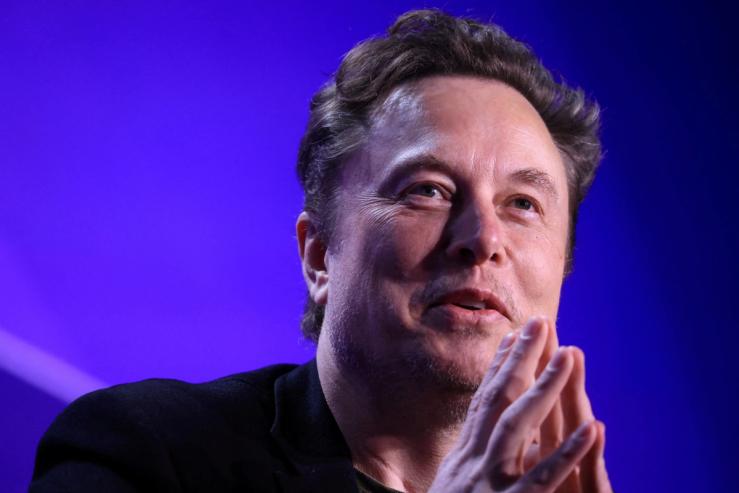The Scene
If you believe what you read about Elon Musk — and sometimes on Musk’s own X account — you’d think the sometimes world’s richest man had lost his marbles and was in serious trouble.
But even as he lives in a wild spectacle of politics and controversy, Musk has vaulted into a serious, competitive position in the AI race, a move that could boost the fortunes of his other businesses in the process.
The data points are concrete. In a little more than a year, his xAI company went from not existing to building what could be the world’s most powerful AI datacenter. And his pursuit of turning Teslas into robotaxis, which looked like a fantasy a year or two ago, is suddenly at least in the realm of possibility.
Musk missed out on getting a first-mover advantage in the generative AI era. After trying unsuccessfully to take over and run OpenAI, which he co-founded as a nonprofit, he walked away, years before OpenAI would release ChatGPT.
But the next wave plays to the strengths Musk has displayed in the automotive and space industries. The AI industry is facing massive, complex logistical hurdles like generating enough energy to power cities and getting hundreds of thousands of graphics processors to work in unison without, literally, melting.
And so most independent competitors to OpenAI have folded, scared away by the billion-dollar price tags and inherent uncertainty.
It’s a challenge made for Musk, whose will is matched by his access to capital and his ability to convince brilliant young engineers to work themselves into the ground in pursuit of the impossible.
xAI built a datacenter in Memphis, Tennessee with 100,000 GPUs that Musk says are now operational, with another 100,000 on the way. That may be an exaggeration, as the power demands alone probably make it impossible to use all 100,000 of those GPUs today.
Microsoft’s datacenter used by OpenAI is believed to be the next largest in the world, but its exact size hasn’t been disclosed.
In this article:
Know More
Musk has called the datacenter in Memphis the largest in the world by far, and said it will be used to train Grok 3, claiming it will be the most powerful AI chatbot in the world by December.
Musk has done this in a record time of 121 days, and has broken all sorts of rules and norms in his relentless effort to catch up to OpenAI, the company he founded and now bitterly despises.
Exhibit A: Musk refused to wait for the power hookups to run his datacenter, so he installed 20 natural gas-powered turbines capable of powering 50,000 homes, not even bothering to apply for permits. The move has raised concerns of air pollution, leading to a spate of bad press.
Musk appears not to care, and probably figured that by the time his turbines get shut down, he might have secured the required energy through the traditional grid.
“Our fundamental competitiveness depends on being faster than any other AI company. This is the only way to catch up,” Musk wrote on X.
Contrast Musk’s approach with that of OpenAI CEO Sam Altman, who is trying to build an international coalition of governments to support the infrastructure necessary to build the insanely large data centers necessary for the next leap in AI capability.
Musk’s early success in building his Memphis GPU cluster has worried Altman, who, according to recent reporting in The Information, believes Musk could soon have access to more compute power than OpenAI and Microsoft.
On Thursday, LinkedIn co founder Reid Hoffman, who helped found OpenAI, said Musk is still playing catch up. “I don’t think it’s necessarily [that] he’s in the lead,” Hoffman said, speaking at The Information’s AI summit.
Reed’s view
This move by Musk is risky. There’s no guarantee that building datacenters of this size will yield magical results.
But there’s little doubt Musk will keep trying as long as he believes it can work. He was willing to bet his entire fortune on the company that eventually became PayPal. And he was willing to bet his PayPal fortune on SpaceX, an audacious idea at the time.
If xAI achieves an AI model that can reason as well as a human, or something close to “Artificial General Intelligence,” it could power the autonomous driving abilities of Teslas and the humanoid robot that the automaker is also attempting to build.
Musk’s Neuralink, maker of experimental brain implant technology that has so far enabled two patients to play videogames with their minds, could also benefit from the AI he is building in Memphis.
And then there’s Grok, xAI’s chatbot that is still mediocre compared to its competitors like ChatGPT, Claude and Gemini.
X may never regain the advertisers it had when it was called Twitter, but its user base may still prove valuable as a distribution channel for Grok, which has exclusive access to the content on X.
Of course, like any effort of such outsized ambition, it could fail. Musk might never catch up to OpenAI. His plan could crash and burn. And if his AI bet fails, his empire may crumble.
But it might succeed. While nobody in the anti-Musk tribe wants to hear this, he may just have the last laugh.


